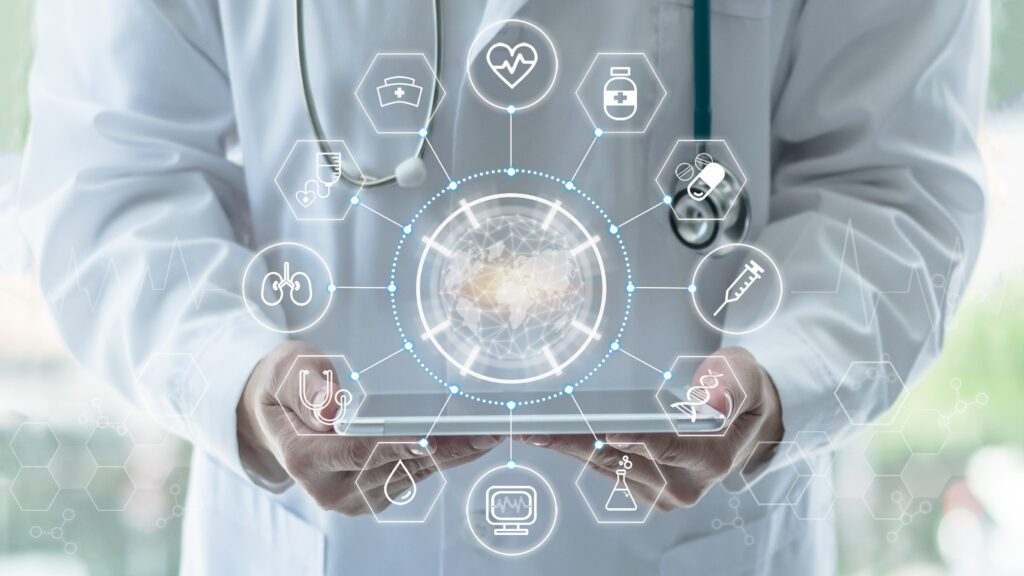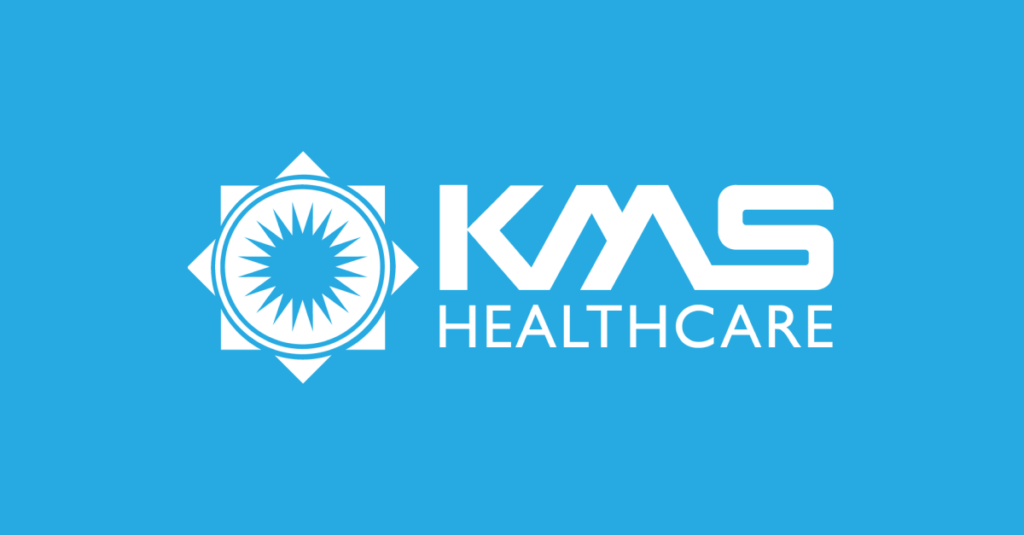Payers and providers need an interoperability partner that gets both EDI and FHIR
Is EDI technology on the way out in healthcare?
Absolutely not. EDI has provided the standard format for fast, secure health data exchange for more than 25 years. Payers and providers rely on EDI transmission to exchange claims, eligibility, and payment information.
So while the integration buzz surrounds FHIR-based APIs, payers, providers, and developers must set and evolve smart EDI strategies alongside FHIR and other data exchange technologies.
That takes a partner masterful in healthcare technology, EDI, and FHIR. Picture that partner helping you craft a rapid integration roadmap with winning strategies and a software integration engine that connects all the dots for EDI and FHIR success.
Read on and we’ll show you how to get there.

What is Electronic Data Interchange?
EDI software enables data exchange between or among two or more computers using a standard, secure format. Many industries have used EDI for decades for reliable, effective electronic document exchange, especially for fast transfer of documents with business partners, customers, or internally. Standard EDI formats let businesses electronically exchange documents such as purchase orders, invoices, forms, payment confirmation, and inventory documents that were previously paper based.
First conceived in the late 1940s by the Army to accelerate supply chain communications and logistics. EDI systems first appeared in the 1960s, and adoption began to grow rapidly in healthcare in the 1990s with a strong nudge from HIPAA.
EDI transactions are typically called “point-to-point,” which means each request, response, and exchange transfers securely from one computer to another. But EDI transmission also lets users send messages and documents to multiple recipients at one time, with each transaction moving point-to-point with each recipient. It’s not the same one-to-many; it’s more like one-to-one many times.
All EDI transactions use the ANSI ASC X12 standard for electronic data exchange. The use of this single standard eliminates variation and helps make EDI exchanges more secure and accurate.

What Are Uses and Benefits of EDI Exchange in Healthcare?
Healthcare providers and payers primarily use EDI to exchange financial, claims, and reimbursement information. For example, hospitals commonly use EDI to confirm benefit and payment eligibility for patients. Providers and payers also exchange claims processing data, claim status, benefit enrollment information, and more.
EDI has worked well in many ways for healthcare providers and payers:
- It’s secure. In 1996, HIPAA mandated the adoption of healthcare EDI formats to both standardize the more than 400 existing formats and enhance data security. EDI standards and formats build in document security through encryption. Only the recipient in an EDI transaction can unencrypt the file. Here, the relative simplicity of computer-to-computer EDI transactions helps establish strong protection of private health data.
- It’s fast. EDI exchanges data from point to point with well-defined document types and codes. This low complexity provides for fast data exchanges. It also simplifies billing processes and promotes faster payments.
- It’s low cost. Although initial setup for EDI can be costly and take time, once it’s in place secure transactions flow back and forth with little technology overhead or cost.
- It improves productivity. EDI improves accuracy, efficiency, and speed, reducing input, shipping, and billing errors with greater standardization and less human intervention, Fast, secure, reliable data exchange reduces denials and rework.
Many payers and providers made that investment long ago. They have little incentive to replace a solution that works and makes claims, payments, and communications faster and easier.

What is Unique About EDI for Healthcare?
Many industries have used EDI for decades. So what makes the EDI standard for healthcare different from standards for, say, supply chain or invoice management?
EDI defines specific data and document formats for different transactions in different industries. In healthcare, there are nine primary EDI transaction sets, each designated by number:
- Eligibility benefit inquiry and response (270 and 271): Providers send a benefit inquiry (270) to payers, and payers respond (271) with either an eligibility confirmation or a reason for rejection (such as incomplete or incorrect format).
- Claims information (837): Providers use this transaction to either request payment for a claim or provide encounter information.
- Payment and remittance advice (835): After a provider sends an 837 payment request, the payer will respond with an 835 transaction to document the payment and explain any claim adjustments.
- Claim status request (276): Providers use this transaction to request the status of a previously submitted claim from the payer.
- Claim status notification (277): Payers use this transaction to update providers on a claim status.
- Care service review (278): Hospitals use this transaction to request prior authorization for patient service from a payer.
- Benefits enrollment (834). Employers, unions, government agencies, associations, and payers use 834 to enroll new members in a health plan, manage or change their status, and remove or reinstate them.
- Payment order and remittance advice (820): Companies use this transaction to send payment instructions to banks, provide pending payment details to suppliers, and send the premium payment information to payers.

The Future of EDI and FHIR for Healthcare Payers and Providers
What will happen as HL7 FHIR standards and web services evolve to handle transactions currently done via EDI?
First, keep in mind that EDI and FHIR don’t necessarily compete for the same prizes. EDI was never intended to be an industry-wide interoperability standard for EHRs and other healthcare information systems. EDI formats and systems enable one-to-one secure transmission of several fixed transaction sets.
Second, healthcare has another big motivation to figure out and adopt FHIR: The 21st Century Cures Act. It established HL7 FHIR as the basis for future interoperability for healthcare, effectively making integration technology decisions for providers and payers. And payers feel the most heat. The Cures Act set an aggressive timeline for payers to publish outward-facing APIs for patient access, provider directories, and payer-to-payer integration.
So while EDI isn’t going away anytime soon, the FHIR train keeps gaining tremendous momentum as the standard for comprehensive healthcare system interoperability.
FHIR Momentum: Will Eligibility be the First Place FHIR Replaces EDI?
The current FHIR release 4 already has resources defined for eligibility requests and responses, as well as for claims, enrollment, explanation of benefits, and payments. That means FHIR has the parts in place to enable all of the transactions that EDI covers.
Our interface experts expect eligibility transactions to be the first to move from EDI to FHIR. FHIR has made great progress on the relatively straightforward eligibility standards. Our experts expect the more complex claims exchange and transaction will take longer to catch FHIR.
What Next? Find a Technology Partner with Expert Knowledge of EDI and FHIR
Even with aggressive FHIR compliance deadlines for payers, EDI will serve payers and providers for many more years.
The good news? EDI can work side by side with evolving technologies while healthcare transitions to newer data exchange tools and protocols.
That’s why healthcare organizations must tackle their needs, strategies, and technologies for EDI and FHIR to work in a mixed environment. But that requires elite knowledge of EDI, FHIR, and other advanced healthcare technologies. And a smart partner will be able to help map out your triumphant integration plan.
KMS Healthcare checks every box for an effective EDI and FHIR partner. We also bring a special technology present to the party: The KMS Connect FHIR and interface accelerator.

Let KMS Connect Do the Heavy Lifting for Building Your APIs
Providers, payers, and software developers all need the same set of core capabilities to build FHIR interfaces. KMS Connect bundles those core capabilities, enabling 80 percent or even 90 percent of your FHIR interface platform. From there, you just need to configure specific endpoints.
If FHIR interface development is a five-mile race, KMS Connect starts you at mile four.
KMS Connect will evolve beyond just FHIR. For example, an upcoming release will also be able to handle EDI files and exchanges. We recognize that EDI still works better and faster for many workflows, so KMS Connect will expand to support as many data, message, and transaction types as possible.
KMS Healthcare can also port your EDI functions and exchanges to KMS Connect, with full support and testing.
Whether you are a vendor, payer, or provider, KMS Healthcare has the right mix of EDI and FHIR expertise combined with a ready interface accelerator to help:
- Assess your needs
- Define the right EDI and FHIR roadmaps
- Put the right technology in place to accelerate your success
- Develop and test your interfaces

KMS Healthcare stands ready to enthusiastically help. Rely on us as your technology and knowledge partner and guide to success with data exchange and integration—starting with getting EDI and FHIR working in productive harmony.

